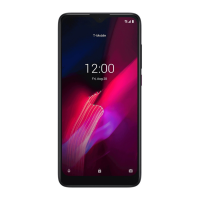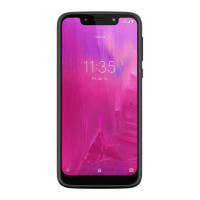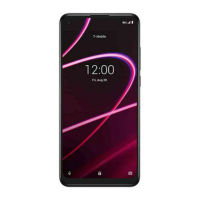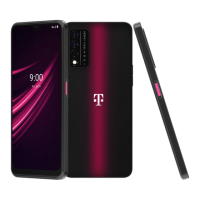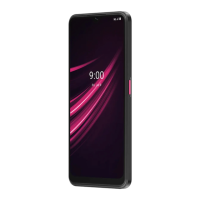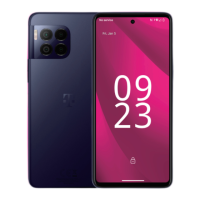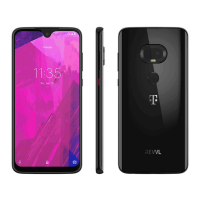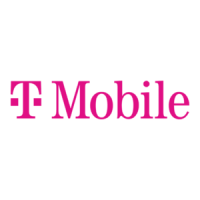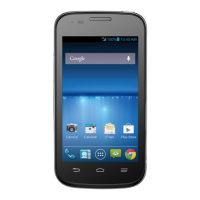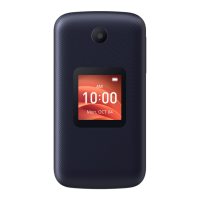41 42
These collection points are accessible free of charge. All products with this sign must be brought to these collection
points.
In non-European Union jurisdictions:
Items of equipment with this symbol are not be thrown into ordinary bins if your jurisdiction or your region has suitable
recycling and collection facilities; instead they are to be taken to collection points for them to be recycled.
In the United States you may learn more about CTIA’s Recycling Program at http://www.recyclewirelessphones.com
CAUTION: IF BATTERY IS REPLACED BY AN INCORRECT TYPE, DEVICE MIGHT EXPLODE. DISPOSE USED BATTER-
IES ACCORDING TO THE INSTRUCTION.
Chargers
Home A.C./ Travel chargers will operate within the temperature range of: 0°C (32°F) to 45°C (113°F).
The chargers designed for your mobile device meet with the standard for safety of information technology equipment
and office equipment use. Due to different applicable electrical specifications, a charger you purchased in one
jurisdiction may not work in another jurisdiction. They should be used for this purpose
only.
The charger shall be installed near the device and shall be easily accessible.
Travel charger: 100-240V, 50/60Hz, 0.6A
Output: 5V, 2A /9V, 1.67A
Radio Waves
THIS MOBILE DEVICE MEETS THE GOVERNMENT’S REQUIREMENTS FOR EXPOSURE TO RADIO WAVES.
Your mobile device is a radio transmitter and receiver. It is designed and manufactured not to exceed the emission
limits for exposure to radio-frequency (RF) energy. These limits are part of comprehensive guidelines and establish
permitted levels of RF energy for the general population. The guidelines are based on standards that were developed
by independent scientific organizations through periodic and thorough evaluation of scientific studies. These
guidelines include a substantial safety margin designed to ensure the safety of all persons, regardless of age and
health.
The exposure standard for mobile devices employs a unit of measurement known as the Specific Absorption Rate, or
SAR. The SAR limit set by public authorities such as the Federal Communications Commission of the US Government
(FCC), or by Industry Canada, is 1.6 W/kg averaged over 1 gram of body tissue. Tests for SAR are conducted using
standard operating positions with the mobile device transmitting at its highest certified power level in all tested
frequency bands.
The FCC has granted an Equipment Authorization for this model device with all reported SAR levels evaluated as in
compliance with the FCC RF exposure guidelines. SAR information on this model device is on file with the FCC and
can be found under the Display Grant section of HYPERLINK “http://www.fcc.gov/oet/ea/fccid” www.fcc.gov/oet/
ea/fccid after searching on FCC ID:2ACCJBT09.
Although the SAR is determined at the highest certified power level, the actual SAR level of the mobile device while
operating can be well below the maximum value. This is because the mobile device is designed to operate at multiple
power levels so as to use only the power required to reach the network. In general, the closer you are to a wireless
base station antenna, the lower the power output of the mobile device. Before a mobile device model is available
for sale to the public, compliance with national regulations and standards must be shown. The highest SAR value
for this model mobile phone when tested is 1.03 W/Kg for use at the ear and 1.18 W/Kg for use close to the body.
While there may be differences between the SAR levels of various mobile devices and at various positions, they
all meet the government requirement for RF exposure. For body-worn operation, the device has been tested when
positioned a minimum of 10 mm from the body without any metal parts in the vicinity of the device or when properly
used with an appropriate accessory and worn on the body. Use of other accessories may not ensure compliance
with FCC RF exposure guidelines. Additional information on SAR can be found on the Cellular Telecommunications
& Internet Association (CTIA) Web site: http://www.phonefacts.net
The World Health Organization (WHO) considers that present scientific information does not indicate the need for
any special precautions for use of mobile devices. If individuals are concerned, they might choose to limit their own
or their children’s RF exposure by limiting the length of calls, or using “hands-free” devices to keep mobile devices
away from the head and body. (fact sheet n°193). Additional WHO information about electromagnetic fields and
public health are available on the following website: http://www.who.int/peh-emf.
Note: This equipment has been tested and found to comply with the limits for a Class B digital device pursuant to
part 15 of the FCC Rules. These limits are designed to provide reasonable protection against harmful interference
in a residential installation. This equipment generates, uses and can radiate radio frequency energy and, if not
installed and used in accordance with the instructions, may cause harmful interference to radio communications.
However, there is no guarantee that interference to radio or television reception, which can be determined by turning
the equipment off and on, the user is encouraged to try to correct the interference by one or more of the following
measures:
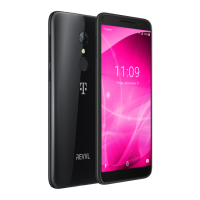
